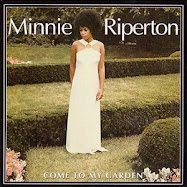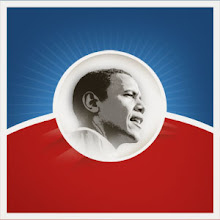Thursday, November 29, 2018
Tammi Terrell
Tammi Terrell tribute
Tammi Terrell (born Thomasina Winifred Montgomery; April 29, 1945 – March 16, 1970 was an American recording artist, best known as a star singer for Motown Records during the 1960s, most notably for a series of duets with singer Marvin Gaye.
Terrell’s career began as a teenager, first recording for Scepter/Wand Records, before spending nearly two years as a member of James Brown’s Revue, recording for Brown’s Try Me label. After a period attending college, Terrell recorded briefly for Checker Records, before signing with Motown in 1965.
With Gaye, Terrell scored seven Top 40 singles on the Billboard Hot 100, including “Ain’t No Mountain High Enough”, “Ain’t Nothing Like the Real Thing” and “You’re All I Need to Get By”. Terrell’s career was interrupted when she collapsed into Gaye’s arms as the two performed at a concert at Hampden-Sydney College on October 14, 1967, with Terrell later being diagnosed with a brain tumor. She had eight unsuccessful operations before succumbing to the illness on March 16, 1970 at the age of 24.
Terrell was born as Thomasina Montgomery in Philadelphia to Jennie (née Graham) and Thomas Montgomery. Jennie was an actress and Thomas was a barbershop owner and local politician. Tammi was the eldest of two. According to the Unsung documentary, her younger sister Ludie Marianna said that they had thought Terrell would be a boy and therefore she would be named after her father. However, when she was born, the parents settled on the name Thomasina, nicknaming her “Tommie”.Tammi was a young victim of sexual molestation by three boys after leaving a neighborhood party at the age of eleven. The boys were arrested and convicted on a rape charge but the traumatic incident led to a change in Terrell’s behavior. She later changed her name to “Tammy” after seeing the film, Tammy and the Bachelor, and hearing its theme song, “Tammy”, at the age of 12. Starting around this time, Terrell started to have migraine headaches. While it was not thought to be of significance at the time, family members would later state that these headaches might have been related to her later diagnosis of brain cancer. According to her sister, Terrell’s mother suffered from mental illness.
Tammi won a number of local talent contests, and by the age of 13 she was regularly opening club dates for acts including Gary “U.S.” Bonds and Patti LaBelle & the Bluebelles. Before turning 15, Terrell signed under the Wand subsidiary of Scepter Records after being discovered by Luther Dixon, recording the ballad, “If You See Bill”, under the name Tammy Montgomery and doing demos for The Shirelles.
After another single, Terrell left the label and, after being introduced to James Brown, signed a contract with him and began singing backup for his Revue concert tours. In 1963, she recorded the song “I Cried”. Released on Brown’s Try Me Records, it became her first charting single, reaching #99 on the Billboard Hot 100.
After this tenure ended, Terrell signed with Checker Records and released the Bert Berns produced duet, “If I Would Marry You” with Jimmy Radcliffe, in which Terrell co-composed. Following this relative failure, Terrell announced a semi-retirement from the music business and enrolled in the University of Pennsylvania where she majored in pre-med, staying at the school for two years. In the middle of this, Terrell was asked by Jerry Butler to sing with him in a series of shows in nightclubs. After an arrangement was made by Butler to assure Terrell that she could continue her schooling, she began touring with Butler.
In April 1965, during a performance at the Twenty Grand Club in Detroit, she was spotted by Motown CEO Berry Gordy, who promised to sign her to Motown.[4] Terrell agreed and signed with the label on April 29, her 20th birthday. Before releasing her first single with Motown’s Tamla subsidiary, “I Can’t Believe You Love Me”, Gordy suggested a name change. Figuring “Tammy Montgomery” was too long of a name to put on a single, Gordy changed it to “Tammi Terrell”. He felt this name screamed “sex appeal”. “I Can’t Believe You Love Me” became Terrell’s first R&B top forty single, followed almost immediately by “Come On and See Me”. In 1966, Terrell recorded two future classics, Stevie Wonder’s “All I Do (Is Think About You)” and The Isley Brothers’ “This Old Heart of Mine (Is Weak for You)”. Terrell joined the Motortown Revue after the release of her first single. During a tour in which she opened for The Temptations, Terrell met the band’s lead singer David Ruffin and embarked on a torrid romance.
Music of Tammi Terrell playlist
In early 1967, Motown hired Terrell to sing duets with Marvin Gaye, who had achieved duet success with Mary Wells and Kim Weston as well as having recorded duets with Oma Heard. During recording sessions, Gaye would recall later that he didn’t know how gifted Terrell was until they began singing together.
At first the duets were recorded separately. For sessions of their first recording, the Ashford & Simpson composition, “Ain’t No Mountain High Enough”, both Gaye and Terrell recorded separate versions. Motown remixed the vocals and edited out the background vocals, giving just Gaye and Terrell vocal dominance. The song became a crossover pop hit in the spring of 1967, reaching number nineteen on the Billboard Hot 100 and number three on the R&B charts, making Terrell a star. Their follow-up, “Your Precious Love”, became an even bigger hit reaching number five on the pop chart, and number-two on the R&B chart. At the end of the year, the duo scored another top ten single with “If I Could Build My Whole World Around You”, which peaked at number ten on the pop chart and number-two on the R&B chart. The song’s B-side, the Marvin Gaye composition, “If This World Were Mine”, became a modest hit on both charts, reaching number sixty-eight on the pop chart and number twenty-seven on the R&B chart. Gaye would later cite the song as “one of Tammi’s favorites”.
All four songs were included on Gaye and Terrell’s first duet album, United, released in the late summer of 1967. Throughout that year, Gaye and Terrell began performing together and Terrell became a vocal and performance inspiration for the shy and laid-back Gaye, who hated live performing. The duo even performed together on TV shows to their hits. While Terrell was finally being established as a star, the migraines and headaches that she suffered with as a child were becoming more constant. While she complained of pains, she insisted to people close to her that she was well enough to perform. However, on October 14, 1967, while performing with Gaye at Hampden-Sydney College, just outside the town of Farmville, Virginia, Terrell fell and buckled onstage; Gaye quickly responded by grabbing her by the arms and helping her offstage. Shortly after returning from Virginia, doctors diagnosed a malignant tumor on the right side of her brain.
After recovering from her first operation, Terrell returned to Hitsville studios in Detroit and recorded “You’re All I Need to Get By”. Both that song and “Ain’t Nothing Like the Real Thing”, reached number-one on the R&B charts. Despite Terrell’s optimism, her tumor got worse requiring more operations. By 1969, Terrell had retired from live performances as she had been ordered by doctors not to perform due to her tumors. Motown issued Terrell’s first and only solo album, Irresistible, in early 1969. Terrell was too ill and sick to promote the recordings.
Both Marvin Gaye and Valerie Simpson gave different stories on how the production of Terrell’s and Gaye’s third album together, Easy, went about. According to reports, Terrell had gotten so ill from her operations that she couldn’t record, and Motown opted to have Valerie Simpson sub in for Terrell, a report that was repeated in the book Marvin Gaye: What’s Going On and the Last Days of the Motown Sound. Gaye would later say the move was “another moneymaking scheme on BG’s part”. Valerie Simpson, on the other hand, stated that the ailing Terrell was brought into the studio when she was strong enough to record over Simpson’s guide vocals, insisting Terrell had sung on the album. Easy produced the singles “Good Lovin’ Ain’t Easy to Come By”, “What You Gave Me”, “California Soul” and the UK top ten hit, “The Onion Song”.
Late in 1969, Terrell made her final public appearance at the Apollo Theater where Marvin Gaye was headlining the bill. As soon as Terrell was spotted by Gaye, he rushed to her side and the duo began singing “You’re All I Need to Get By” together.
In her memoirs about her famous sister, Ludie Montgomery writes that Terrell was the victim of sexual molestation by three boys after leaving a neighborhood party at the age of eleven. The boys were arrested and convicted on a rape charge. The incident led to a change in Terrell’s behavior. During her early career, Terrell dated many men both in the music business and out. Though they never dated, Terrell had been romantically interested in singer Sam Cooke and she had a budding friendship with Gene Chandler. In 1962, at 17, she signed with James Brown and the two engaged in a sexual relationship. However, this relationship turned out to be abusive. After a horrific incident with Brown backstage after a show, Terrell asked Chandler, who witnessed the incident first hand, to take her to the bus station, so she could go home. He later called Terrell’s mother to pick her up. This ended Terrell’s two-year affair with Brown.
In 1965, Terrell forged a romance with then-Temptations singer David Ruffin. The following year, Ruffin surprised Terrell with a marriage proposal. However, Terrell was devastated once she learned that Ruffin had a wife and three children and another girlfriend, also living in Detroit. This led to the couple having public fights. Though it was later claimed that Ruffin had hit Terrell with a hammer and a machete, these claims were denied by Terrell’s family and her Motown label mates, though Ludie Montgomery confirmed a story that Terrell was hit on the side of her face by Ruffin’s motorcycle helmet, leading to the end of their relationship in 1967.
After signing with Motown, she forged friendships with some of the label’s artists. One of her closest was with her duet partner, Marvin Gaye, with whom she had a close platonic relationship. Though it’s often alleged their relationship grew into a brief romance, those close to the singers denied this claim. Ashford & Simpson, and Gaye in later years, stated the relationship was almost sibling-like. Nevertheless they were reported as having opposite personalities: Gaye being shy and introvert, Terrell being streetwise and extrovert. What they shared was their charisma as a performing couple and their sense of humour. Gaye would later call Terrell “sweet” and “misunderstood” and stated that Terrell was his “perfect [musical] partner”. At the time of her death, she was engaged to be married to Ernest Garrett, who was a doctor at Terrell’s hospital but not her personal doctor.
By early 1970 Terrell was confined to a wheelchair, suffered from blindness and hair loss, and weighed a scant 93 lb. Following her eighth and final operation on January 25, 1970, Terrell went into a coma for the remaining month and a half of her life.
On March 16, Terrell died of complications from brain cancer. She was six weeks short of her 25th birthday. Her funeral was held at the Jane Methodist Church in Philadelphia. At the funeral, Gaye delivered a final eulogy while “You’re All I Need to Get By” was playing. According to Terrell’s fiancé, Dr. Garrett, who knew Gaye, her mother angrily barred everyone at Motown but Gaye from her funeral.
Already depressed from the first diagnosis of her illness back in late 1967 and from her onstage collapse, Marvin Gaye further withdrew from performing following Terrell’s death, re-emerging two years later performing during a benefit concert at the then newly-opened Kennedy Center at Washington, D.C. in May 1972. Terrell’s mother criticized Motown for not helping with Terrell’s illness accusing the label for covering up the singer’s condition releasing albums of Terrell’s work without her consent. Gaye had also contended that he felt Motown was taking advantage of Terrell’s illness and refused to promote the Easy album despite Motown telling him it would cover Terrell’s health expenses.
Gaye never fully got over Terrell’s death, according to several biographers who have stated that Terrell’s death led Gaye to depression and drug abuse. In addition, Gaye’s classic album What’s Going On, an introspective, low-key work which dealt with mature themes released in 1971, was in part a reaction to Terrell’s death. In July 1970, four months after Terrell’s untimely passing, a dramatic rearrangement of “Ain’t No Mountain High Enough”, was released by Diana Ross, becoming a number-one hit and one of Ross’ signature songs.
On October 8, 2010, Hip-O Select released Come On And See Me: The Complete Solo Collection, a collection of all of Terrell’s solo work dating back to high school, plus never before released songs and 13 minutes of the only known live stage recordings.
Written by Dianne Washington
Tammi Terrell
Ain't No Mountain High Enough - Marvin Gaye & Tammi Terrell
TAMMI
A life so short that casts a shadow so long
The voice of an angel captured in a song
The face charmed, the voice charmed,
the smile disarmed
She was a girl with a woman’s story
She sang of love lost and of love found
Songs of naivety that took us to a higher ground
She sang with Marvin and she sang alone
The sounds that flowed from her soul
Were a God given gift
A gift we could not keep
Soon Marvin sang alone
The brilliance of the super nova was gone
Her will to survive could not keep her alive,on Earth
Now she lives in our hearts and in our minds
in our ears on Earth
Because Love is forever
Last edited by sophisticated_soul;
Sources:
https://soulfuldetroit.com/showthread.php?6818-quot-Nightflight-quot-Tue-Sept-25-9P-12M-ET-a-tribute-to-Tammi-Terrell
https://strathdee.wordpress.com/2015/12/17/tammi-terrell/
http://www.retrokimmer.com/2012/08/tammi-terrell-forever-irresistible.html
https://blackjunction.tv/watch/c6Y4NnV83AiCLPV
https://www.discogs.com/artist/136220-Tammi-Terrell
https://www.amoeba.com/blog/2010/03/the-thing-of-a-thing-of-a-thing-/remembering-tammi-terrell-who-died-40-years-ago-today.html
https://streetlinevideo.com/tammi-terrell-2/
https://watchtvnow.co/? d5wlLEAEYASAAEgI29vD_BwE
Saturday, November 10, 2018
The Stylistics
The Stylistics
From Wikipedia:
The Stylistics are a Philadelphia soul group that achieved its greatest chart success in the 1970s. They formed in 1968, consisting of singers Russell Thompkins Jr., Herb Murrell, Airrion Love, James Smith, and James Dunn. All of their US hits were ballads characterized by the falsetto of Russell Thompkins Jr. and the production of Thom Bell. During the early 1970s, the group had twelve consecutive R&B top ten hits, including "Stop, Look, Listen", "You Are Everything", "Betcha by Golly, Wow", "People Make the World Go Round", "I'm Stone in Love with You", "Break Up to Make Up", and "You Make Me Feel Brand New".
The Stylistics were created from two Philadelphia groups, The Percussions and The Monarchs. Russell Thompkins Jr., James Smith, and Airrion Love came from the Monarchs, and James Dunn and Herbie Murrell came from the Percussions. In 1970, the group recorded "You're a Big Girl Now", a song their road manager Marty Bryant co-wrote with Robert Douglas, a member of their backing band Slim and the Boys, and the single became a regional hit for Sebring Records.Producer Bill Perry spent $400 to record the song in the Virtue Studios in Philadelphia. The larger Avco Records soon signed the Stylistics, and the single eventually climbed to number seven on the US Billboard R&B chart in early 1971.
After signing to Avco, the record label approached producer Thom Bell, who had already produced a catalogue of hits for The Delfonics, to work with the group.The Stylistics auditioned for Bell, but he was initially unimpressed. He ultimately agreed to produce the group because he believed in the potential of lead singer, Russell Thompkins, Jr.'s distinctive, nasal high tenor & falsetto voice. Avco gave Bell complete creative control over the Stylistics and he proceeded to focus the group's sound exclusively around Thompkins's voice. On most of the group hits, Bell would have Thompkins sing virtually solo.
The first song recorded with Bell and his collaborator, lyricist Linda Creed, was the lush "Stop, Look, Listen". Bell imported techniques he had perfected with The Delfonics and his musical arrangements worked perfectly with Thompkins' falsetto vocals.
Their hits from this period —distilled from three albums— included "Betcha by Golly, Wow" (U.S. #3), "I'm Stone in Love with You", "Break Up to Make Up" (U.S. #5), "You Make Me Feel Brand New" featuring Thompkins singing a rare lead vocal duet with Airrion Love, the aforementioned "Stop, Look, Listen", "You Are Everything", and the Top 20 Pop hit "Rockin' Roll Baby" (U.S. #14). "You Make Me Feel Brand New" was the group's biggest U.S. hit, holding at No. 2 for two weeks just as the spring of 1974 turned to summer, and was one of the group's five U.S. gold singles.
The Stylistics' smooth sound also found an easier path on to adult contemporary airwaves than many other soul artists and the group made Billboard magazine's Easy Listening singles chart twelve times from 1971 to 1976, with three entries ("Betcha by Golly, Wow", "You Make Me Feel Brand New", and "You'll Never Get to Heaven (If You Break My Heart)") reaching the Top 10. Every single that Bell produced for the Stylistics was a Top Ten R&B hit, and several—"You Are Everything", "Betcha by Golly Wow!", "I'm Stone in Love with You", "Break Up to Make Up", and "You Make Me Feel Brand New"—were also Top Ten pop chart hits. The group also enjoyed commercial success with big hits with this material throughout Europe.
Monday, November 5, 2018
Roy Hargrove Quintet 'Soulful' | Live Studio Session
Hargrove, an incisive trumpeter who embodied the brightest promise of his jazz generation, both as a young steward of the bebop tradition and a savvy bridge to hip-hop and R&B, died on Saturday morning in New York City.
Hargrove was a two-time Grammy winner: Best Jazz Instrumental Album in 2003 for 'Directions in Music' with pianist Herbie Hancock and saxophonist Michael Brecker; and Best Latin Jazz Performance in 1998 for 'Habana,' an Afro-Cuban project.

8:41 AM - 3 Nov 2018
“The Great Roy Hargrove. He is literally the one man horn section I hear in my head when I think about music. To watch him harmonize with himself stacking nine horn lines on mamouth 10 mins songs RARELY rewinding to figure out what he did,” Questlove posted on Instagram.
Here’s what some others said.
1. Anita Baker
Tonal, Melodic, from BeBop to Hip-hop. Soulful, BRILLIANT, Young Master... Roy Hargrove
2. Don Cheadle
r.i.p., roy hargrove. you were a beautiful soul, young lion, and you will be terribly missed.
3. Michael Eric Dyson
Twitter Ads info and privacy3. Michael Eric Dyson
R.I.P. to the great jazz trumpeter #RoyHargrove, who bent his beautiful, elastic notes through a horn that was fluent in multiple musical languages from bop to hip hop, playing with folk from @wyntonmarsalis to @fatbellybella and @TheDangelo! @MwataDyson #RIPRoyHargrove
4. Robert Townsend
5. Sonny Rollins
On Roy Hargrove: “Having been fortunate to play with the super, super trumpet stars of the day, I found it inconceivable that this new kid on the block could be in that class, could be that good. He was. He is, and will always be.” -- S.R.
6. D.L. Hughley
7. Christian McBride
I have no words over the loss of my dear brother of 31 years. We played on a lot of sessions together, traveled a lot of miles together, laughed a lot together, bickered on occasion - and I wouldn’t change our relationship for anything in the world. Bless you, Roy Hargrove.
8. Wendell Pierce
SHOCK:Roy Hargrove was singular in his vision & expansive in his music.I have followed this virtuoso from the days he first came to NY. Late nights at the Vanguard & early mornings at Bradley’s. An artist of profound truth. He never struck a false note on his horn or demeanor RIP
9. Dianne Reeves
My heart is broken at the news of the great Roy Hargrove’s passing Rest in the beauty that you share with us. Gone to soon and never forgotten
10. Marc J. Spears
Rest In Peace to not only a jazz legend but a music legend. I loved watching Roy Hargrove when he played regularly at the old San Francisco Yoshi’s. He made the trumpet sing. Epitome of cool with his dark sunglasses, hip haircut & chill demeanor. Definitely won’t be forgotten.
Both a steward of tradition and bridge to hip-hop and R&B, Roy Hargrove, a galvanizing presence in jazz over the last 30 years, died on Friday at the age of 49. https://n.pr/2yRM03s
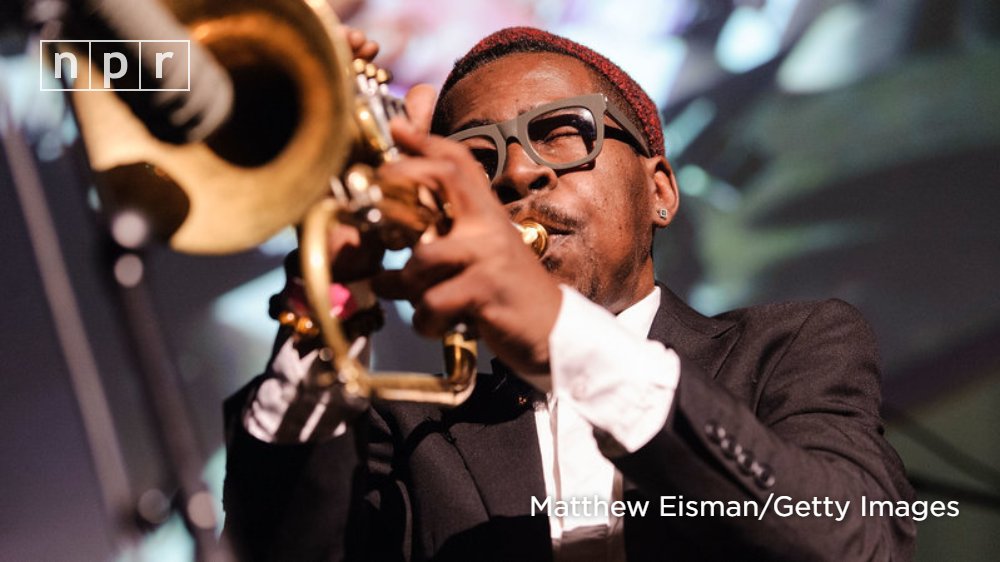
Subscribe to:
Posts (Atom)



























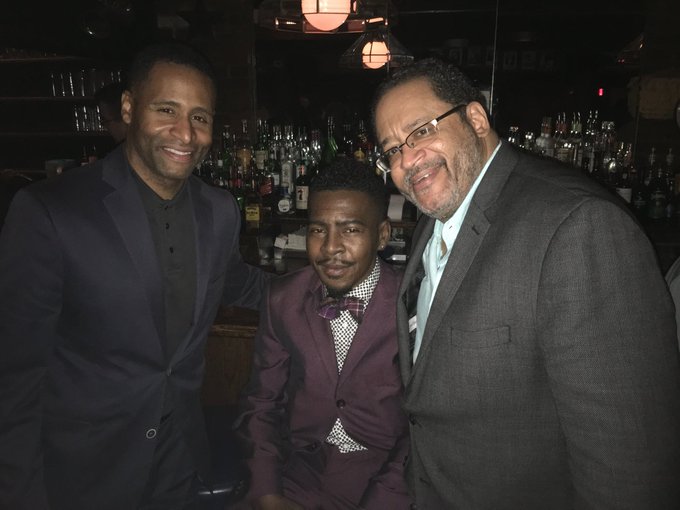


















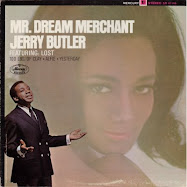


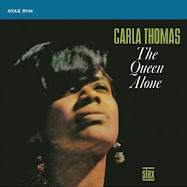
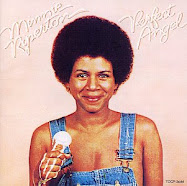.jpg)
